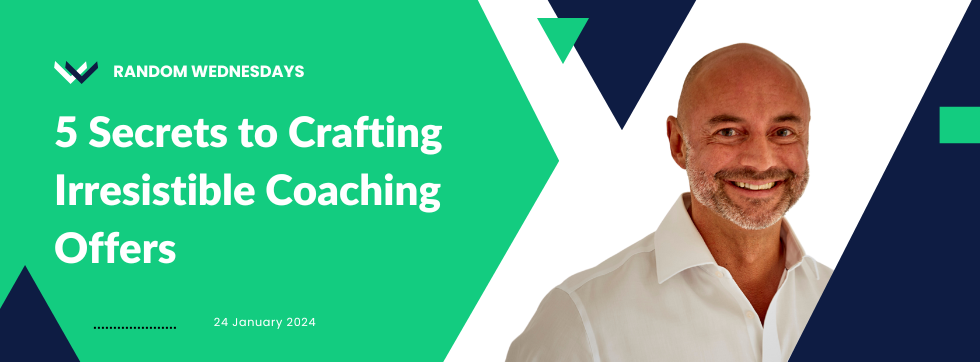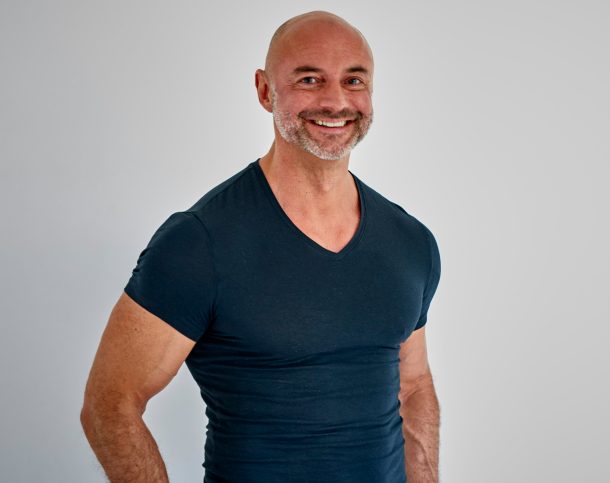How to design offers your clients will find irrestible
Alex Hormozi’s mentor, Travis Jones said it best.
“Make people an offer so good they feel stupid saying no.”
So today, we’re going to explore the mechanics of creating an irresistible coaching offer.
An offer that not only speaks directly to your client’s heart but also aligns with their needs and desires.
Get this right and you’ll attract your ideal clients, loyalty and referrals.
Get this wrong and you’ll find yourself ignored, declined and struggling to survive.
Unfortunately, most coaches fail to master these elements. Leaving them scratching around with little to show for their efforts.
Here’s how to avoid feeling rejected and be in high demand.
Your value proposition
Before we delve into specifics, let’s define the basics.
Your value proposition. This describes the benefits your clients can expect from working with you, or buying your services.
From your perspective, it’s all about:
1. The anticipated gains they hope to achieve.
2. The potential pains they hope to alleviate.
Through your clients’ eyes, it’s about achieving desired outcomes and sidestepping potential setbacks.
Simply put, it’s what they hope to gain from your coaching.
The value equation
Next, let’s quantify value using Alex Hormozi’s brilliant formula.
This equation helps you balance various factors to optimize your offers:
(DO x PLA) / (TD x EF) = VALUE
1. DO: Your client’s Dream Outcome.
2. PLA: Perceived Likelihood of their Achievement.
3. TD: Time Delay between start and achievement.
4. EF: Effort & Sacrifice required for success.
This formula essentially answers your clients’ key questions:
1. What will I achieve, (DO)
2. How likely is that to happen? (PLA)
3. How long will it take me? (TD)
4. What’s expected of me? (EF)
All these variables go into your client’s “value mixer”. Helping to determine the perceived value of working together.
Now let’s explore the variables in more detail.
Identify your client’s dream outcome
Reflecting on my early thoughts of becoming a professional coach in 2018. I realised it wasn’t just about becoming a professional coach.
It was about:
· Freedom to live and work, on my terms
· Freedom to be myself and support my family
· Freedom to create and support others
Like me, your clients have their unique aspirations. Your first step is to understand these.
Then align their immediate needs (becoming a coach) with their long-term aspirations (freedom).
The obstacle is the way
Next, compile a thorough list of the potential hurdles your clients might encounter.
Don’t “wing it” or assume things. Take your time and be thorough.
List as many problems/challenges as you can.
For example, to achieve my coaching dream, I remember grappling with:
1. Fear of failure
2. Managing my time
3. Limited financial resources
4. Feeling excited but overwhelmed
5. Minimal network of potential clients & contacts
I also knew setting up my coaching business was going to be a struggle:
· Creating clients
· Building authority
· Optimising pricing
· Creating a compelling brand
· Defining a unique value proposition
· Increasing visibility and engagement
Understanding these challenges is the key to making your coaching offers specific and tangible.
Turning problems into solutions
Now, transform each problem into a targeted solution.
Try to avoid presenting solutions that are too generic or vaguely related.
Instead, personalise these solutions to match your clients’ unique needs.
For example:
Challenge:
Creating clients … is stressful, overwhelming, demoralising and hard work.
Solution:
How to create clients, feel like play, whilst having fun, so that you love making proposals (especially if you hate selling).
Work through your list, and transform each challenge into a solution.
How will you deliver your solutions?
With a list of problems and solutions, the next step is figuring out how you’re going to deliver your service.
You might have one product or service, “How to effortless create clients without selling” and decide to launch it with 3 different offers.
This approach works best when you’ve collected data from your ideal customers. And it aligns with the preferences they’ve shared with you.
For example, your “Client Creation” service might have 3 different packages:
1. Do It Yourself (on demand)
2. Do It Together (group)
3. Do It 1-to-1 (individual)
Each option offers a different level of engagement and investment.
Prioritise and cut
Review each challenge and solution, focusing on high-value, cost-effective elements.
Remove anything that doesn’t provide much value. This will ensure your offer is both beneficial for the client and sustainable for you.
Cut elements that are:
1. High cost and low value
2. Low cost, low value
You will then end up with those that are:
1. Low cost, high value
2. High cost, high value
Putting it all together
By now, you should have a clear picture of your client’s desired outcomes. The obstacles they face. And how you can turn these into personalized, valuable solutions.
You’ve:
· Identified your client’s dream outcome
· Listed the obstacles and challenges standing in their way
· Transformed obstacles into solutions
· Established different ways to deliver solutions
· Prioritised based on value and cost.
Aligning your offer with your unique coaching style
Ensure your offer reflects your unique coaching style. In a crowded market, your authenticity is your strongest asset.
Avoid imitating other coach’s offers. Let your individuality shine through your offer.
Conclusion
By implementing these strategies, you can craft irresistible coaching offers that not only meet your clients’ needs but also drive your business towards greater success and profitability.
Remember, the key is to align your offers with your clients’ deepest needs and aspirations.
Clearly communicate the value, and strategically structure your services for impact and sustainability.


